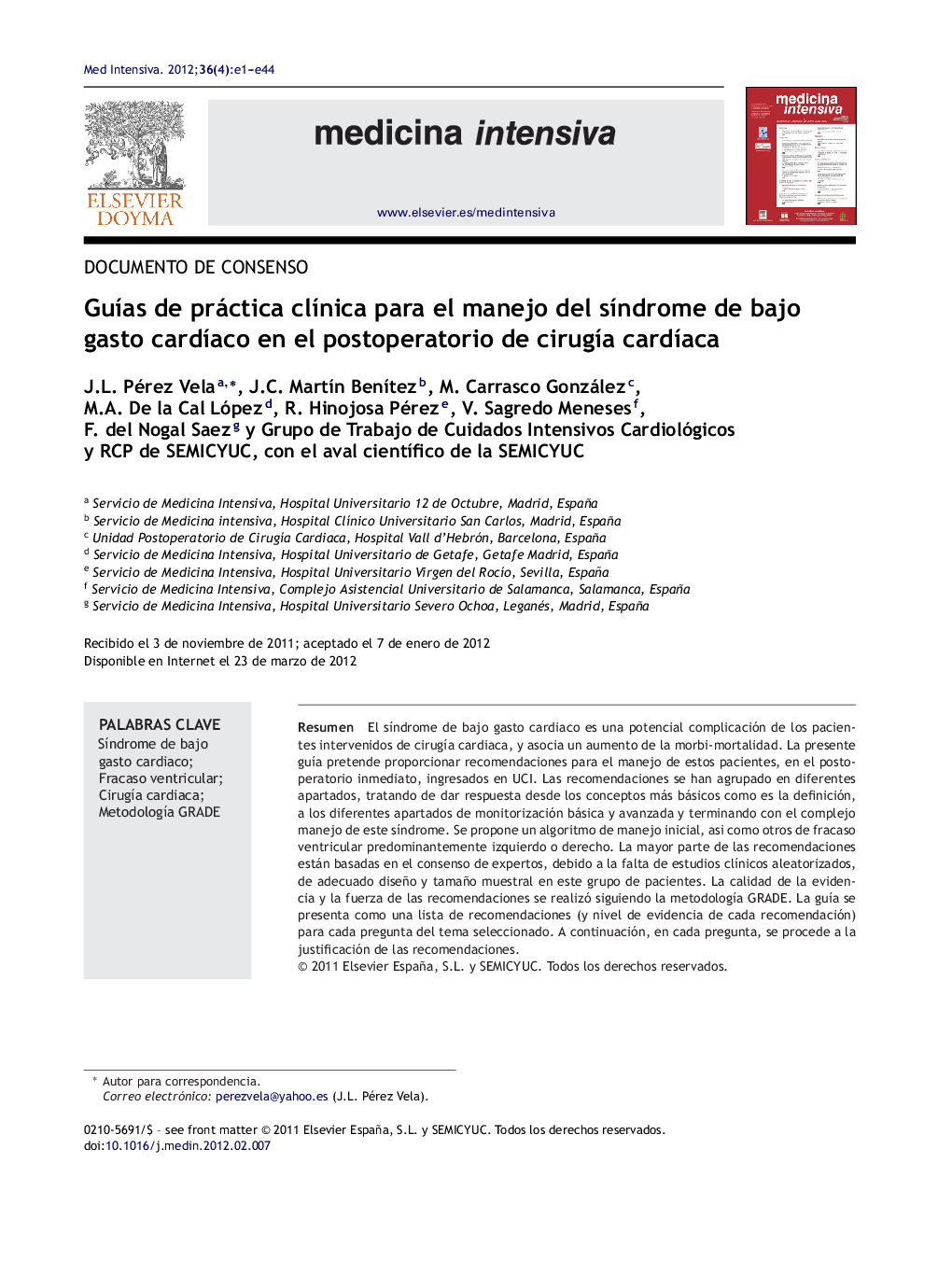| Article ID | Journal | Published Year | Pages | File Type |
|---|---|---|---|---|
| 3112897 | Medicina Intensiva | 2012 | 44 Pages |
ResumenEl síndrome de bajo gasto cardiaco es una potencial complicación de los pacientes intervenidos de cirugía cardiaca, y asocia un aumento de la morbi-mortalidad. La presente guía pretende proporcionar recomendaciones para el manejo de estos pacientes, en el postoperatorio inmediato, ingresados en UCI. Las recomendaciones se han agrupado en diferentes apartados, tratando de dar respuesta desde los conceptos más básicos como es la definición, a los diferentes apartados de monitorización básica y avanzada y terminando con el complejo manejo de este síndrome. Se propone un algoritmo de manejo inicial, asi como otros de fracaso ventricular predominantemente izquierdo o derecho. La mayor parte de las recomendaciones están basadas en el consenso de expertos, debido a la falta de estudios clínicos aleatorizados, de adecuado diseño y tamaño muestral en este grupo de pacientes. La calidad de la evidencia y la fuerza de las recomendaciones se realizó siguiendo la metodología GRADE. La guía se presenta como una lista de recomendaciones (y nivel de evidencia de cada recomendación) para cada pregunta del tema seleccionado. A continuación, en cada pregunta, se procede a la justificación de las recomendaciones.
The low cardiac output syndrome is a potential complication in cardiac surgery patients and associated with increased morbidity and mortality. This guide is to provide recommendations for the management of these patients, immediately after surgery, admitted to the ICU. The recommendations are grouped into different sections, trying to answer from the most basic concepts such as the definition to the different sections of basic and advanced monitoring and ending with the complex management of this syndrome. We propose an algorithm for initial management, as well as two other for ventricular failure (predominantly left or right). Most of the recommendations are based on expert consensus because of the lack of randomized trials of adequate design and sample size in this group of patients. The quality of evidence and strength of the recommendations were made following the GRADE methodology. The guide is presented as a list of recommendations (and level of evidence for each recommendation) for each question on the selected topic. Then for each question, we proceed to the justification of the recommendations.
